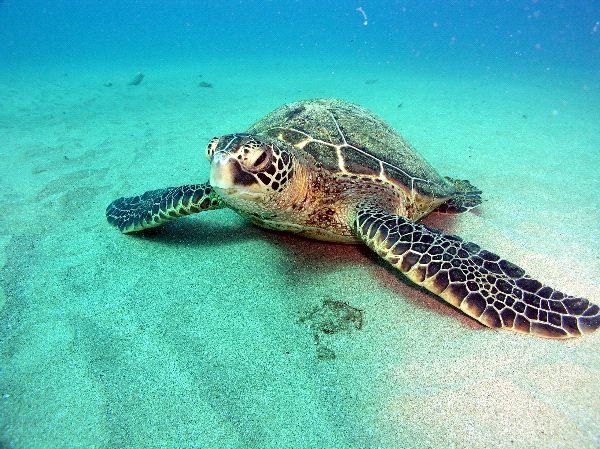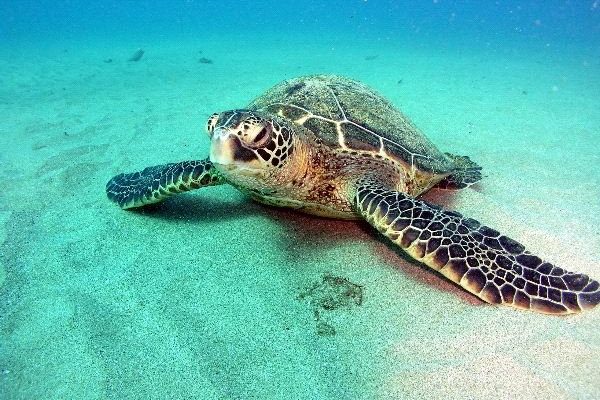
Let’s take a moment to explore how sea turtles have evolved to thrive in their aquatic habitats. These adaptations are like specialized tools in a toolbox, each designed for a specific need—whether it’s swimming, eating, or avoiding predators. They show us not just how resilient these creatures are, but also how fascinating evolution can be. So, grab a seat and let’s dive into the amazing traits that make sea turtles masters of the ocean.
Streamlined Bodies for Efficient Swimming
One of the most striking adaptations of sea turtles is their streamlined bodies. Think about a sleek sports car designed for speed. Sea turtles have evolved to have a shape that minimizes water resistance. Their bodies are smooth and hydrodynamic, allowing them to cut through the water with ease. This design is crucial, especially when they need to travel long distances to find food or migrate.
Their flippers are another key feature of this streamlined design. Unlike the limbs of land animals, sea turtles’ flippers are long and paddle-like. This enables them to swim gracefully, moving powerfully through the water. When they need to make sharp turns or navigate tight spaces, their flippers provide the agility they need. Imagine swimming with arms spread wide like a bird; that extra surface area helps them maintain speed and control.
On top of that, sea turtles can hold their breath for long periods—some species can stay underwater for up to five hours! This ability allows them to dive deep in search of food without constantly surfacing for air. Their bodies are designed for a life of adaptation, making them expert explorers of their underwater realm.
Hard Shells for Protection
Another fascinating feature of sea turtles is their hard shells, which serve as a protective armor. This shell is made of a tough material called keratin, the same substance found in human nails and hair. It forms a strong barrier against predators, much like a sturdy shield. When danger approaches, sea turtles can retract their heads and limbs into their shells, a clever way to avoid being eaten.
But the shell isn’t just for defense; it also helps with buoyancy. The unique structure of their shells allows sea turtles to float effortlessly in the water. This buoyancy is vital for conserving energy as they swim and rest. Just like a boat that can stay afloat without using fuel, sea turtles can glide through the ocean, conserving their strength for when they need it most.
Interestingly, different species of sea turtles have varying shell shapes and sizes, adapted to their specific environments. For example, the leatherback turtle has a more flexible, softer shell compared to the rigid shells of other species. This adaptation helps them dive deeper into cooler waters, where their favorite jellyfish snack is plentiful.
Sensitive Senses for Navigation
You might be surprised to learn that sea turtles have a remarkable ability to navigate the vast ocean. They rely on their sensitive senses to find their way, similar to how we might use our GPS or a map. Sea turtles possess an extraordinary sense of smell, which helps them locate food and even detect predators. This keen sense is essential for survival, especially in the open ocean where visibility can be limited.
Beyond smell, sea turtles also have impressive eyesight. They can see well both above and below water, allowing them to spot potential threats or food sources quickly. Some studies suggest that they can even detect the colors of their environment, making it easier to find brightly colored coral reefs or schools of fish.
Perhaps the most astonishing aspect of their navigation skills is their ability to sense the Earth’s magnetic field. Sea turtles can detect magnetic fields and use them as a guide during migration. This instinctual ability helps them return to nesting sites hundreds or even thousands of miles away. Imagine having an internal compass that always points you in the right direction—that’s what these turtles have!
Unique Diet Adaptations
Sea turtles are omnivores, which means they eat a wide variety of foods, but different species have specific dietary preferences. For example, some species, like the green sea turtle, mostly munch on seagrasses and algae. Their specially adapted jaws are perfect for grazing through vegetation, much like cows do on land. On the other hand, the loggerhead turtle prefers to feast on hard-shelled prey like crabs and conchs. Their strong, powerful jaws can crack open shells, showcasing their ability to adapt to different feeding habits.
Another surprising adaptation is their ability to detoxify the salt from seawater. Sea turtles have special glands near their eyes that help remove excess salt. This allows them to thrive in an environment where freshwater is scarce. It’s like having a built-in water filter that keeps them hydrated while they enjoy their salty meals.
Additionally, some sea turtles have also developed a taste for jellyfish. While this may seem simplistic, it’s a vital part of their diet, helping them gain essential nutrients. Interestingly, the presence of jellyfish in the ocean is also increasing due to changing ecosystems, which means some species of sea turtles are adapting their diets to take advantage of this opportunity.
Reproductive Adaptations
When it comes to reproduction, sea turtles have a fascinating set of adaptations. One of the most remarkable features is their nesting behavior. Female sea turtles return to the same beaches where they were born to lay their eggs. This instinctual behavior, known as natal homing, ensures that they choose a suitable environment for their offspring.
During nesting season, a female sea turtle can lay hundreds of eggs at a time, burying them in the sand. This strategy helps increase the chances of survival, as not all eggs will hatch and reach adulthood. However, the eggs are highly vulnerable to predators like raccoons and birds. The sand also provides some insulation and protection, keeping the eggs warm until they hatch.
Another interesting adaptation is the temperature-dependent sex determination of sea turtle eggs. The temperature of the sand where the eggs are buried will determine the sex of the hatchlings. Warmer sand tends to produce female hatchlings, while cooler sand produces males. This unique adaptation is crucial for maintaining the balance of the population in their ocean environment, especially as climate change affects nesting beaches.
Behavioral Adaptations to Avoid Predators
Living in the ocean comes with its share of challenges, especially when it comes to avoiding predators. Sea turtles employ various behavioral adaptations to stay safe. For instance, they often choose to swim in groups, a behavior known as schooling. This not only provides protection from potential threats but also helps them navigate more effectively.
When they sense danger, sea turtles can dive deep into the ocean, using their streamlined bodies to escape quickly. They also have an instinctive ability to remain still when threatened, often blending into their surroundings. This camouflage can make them less visible to predators lurking nearby, much like how a chameleon blends into its environment.
Additionally, some sea turtles utilize a “basking” behavior when they float on the surface of the water. This not only allows them to soak up the sun but also provides a strategic moment to observe their surroundings while remaining out of reach from predators below. It’s like taking a well-deserved break while still keeping an eye out for trouble.
Sea turtles are a beautiful testament to the wonders of evolution. Their adaptations—from streamlined bodies and hard shells to keen senses and unique diets—enable them to thrive in the ocean. Each feature, big or small, plays a crucial role in their survival and success. As we learn about these incredible creatures, it’s essential to appreciate how they fit into our ecosystem and the importance of protecting their habitats.
Next time you catch a glimpse of a sea turtle gliding through the water, remember the amazing adaptations that make this possible. These gentle giants remind us that life in the ocean is just as complex and fascinating as life on land. Let’s continue to celebrate and safeguard their place in our world.

